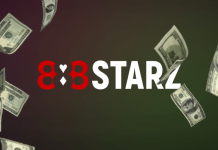ECommerce Business Models You Should Know About Before You Start Your eCommerce Store
ECommerce or Electronic commerce refers to commercial transactions that happen over the Internet. Any transaction of data and funds falls under this category. In eCommerce, business transactions can be carried out through various methods, namely, B2B or Business to Business, B2C or Business to Customer, C2B or Customer to Business, and C2C or Customer to Customer.
For instance, if you buy something from Amazon, which is an eCommerce store, it will involve an eCommerce transaction. In such a situation, you will be exchanging data like text, images, and delivery address, after which you make payments.
ECommerce allows businesses to sell their products to customers and vice versa
Types Of ECommerce Business Models
Depending on the kind of parties involves in a transaction, an eCommerce transaction can be of any of the following types:
- Business to Business or B2B: In this type, companies will engage in business with one another, and the end consumer is not a part of it. The transactions, as a result, will involve simply retailers and manufacturers. So, an eCommerce store is going to sell products to another store. This model typically implies a lengthier sales cycle. However, the order values are more, and there are recurrent purchases.
- Business to Consumer or B2C: In this type, the business sells its services or products to consumers directly. So, a user browses the website of an eCommerce store and looks at the images, product reviews, and text. If they are satisfied, they will place an order, and this company will then ship the product to them directly.
For instance, Amazon is an eCommerce store that engages in B2B transactions. The decision-making process here is brief, and production values are usually less compared to a B2B transaction. So, B2C companies will spend less on making sales. However, their average order value may be lower than B2B counterparts. Moreover, B2C will include services too, along with product delivery. So, those in this business type use mobile apps and native advertising to reach out to their target audience faster.
- Consumer to Consumer or C2C: Here, transactions will involve customers directly, and there is no company involved in the process. The C2C type can help you sell your products or assets to another party directly. The products, in this case, are bikes, cars, and electronic goods. For instance, Craigslist or eBay are examples of a C2C model that can connect consumers to enable them to exchange goods and services. These businesses make profits by charging listing and transaction fees.
- Consumer to Business or C2B: This model is the opposite of B2C and is used when a product is sold by consumers to businesses. For instance, a freelance content writer can sell his services to an SEO firm or a freelancer IT professional can sell software to a company. In such a transaction, a website lets the consumer post their content so that companies can bid on it. For instance, ELance, one of the first to try out this model, enabled companies to hire freelancers. This model is now being used by businesses to connect to social influencers for marketing purposes.
Types Of Ecommerce Business Revenue Models
- Direct to Consumer or D2C: In this model, there is no middleman involved, and the transaction happens between the eCommerce store and its customers. Since no third party is involved, companies have loyal followers.
- White Labeling: You can use white labeling for adding your brand name to a generic product obtained from distributors. In private labeling, retailers will hire manufacturers for creating unique products that they can sell exclusively.
- Wholesaling: Here, the retailer will offer products in bulk for discounted rates. This model needs more investment at the beginning, and you have to manage the stock and inventory, track buyer orders and shipping details, and invest in a warehouse.
- Dropshipping: It is perhaps the fastest-growing eCommerce method. Dropshippers will sell items brought by third-party suppliers. They act as middlemen, connecting manufacturers to buyers. There are many easy-to-use tools that allow the users of dropshipping platforms like Shopify or BigCommerce to integrate their inventory from globally-spread suppliers for their stores. The easy-to-use tools allow platforms like Shopify to integrate inventory from suppliers around the world for their storefronts.
- Subscription: This model was originally used for delivering books every month to loyal buyers in England. Now almost every business uses subscription for offering savings and convenience. Nature Box, Blue Apron, and Stitch Fix are some businesses that use a subscription model for delivering boxed products to buyers at regular intervals. But, you need to choose the product or niche very wisely, else, it is hard for companies to survive.



























